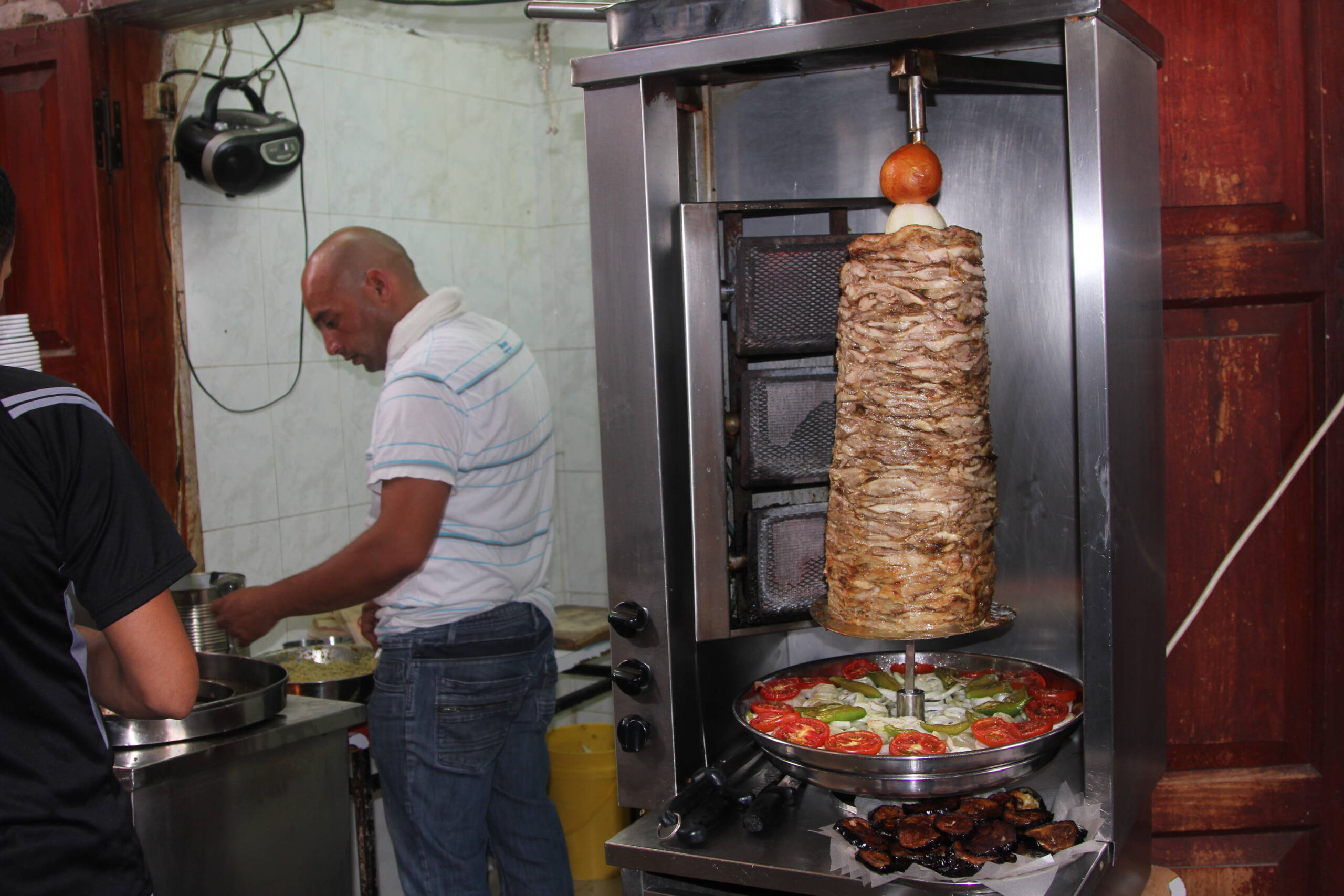Few sights in the world of street food are as inviting as a shawarma spit turning slowly, its layers of marinated meat glistening in the heat. In this photo, the vertical rotisserie dominates the frame: an impressive tower of seasoned meat stacked high, capped with an onion and tomato, and surrounded at its base by bright rings of sliced tomatoes, peppers, and onions. Beneath it all, juices drip down to mingle with the vegetables, promising smoky richness and a medley of flavors that only hours of roasting can create.

To the left, a man in a striped shirt is busy at work—likely preparing accompaniments or wrapping fresh bread for the next order. This is the heartbeat of culinary tourism: the moment when food is not just consumed but witnessed in its making. Shawarma isn’t just about grabbing a quick bite; it’s about the ritual of waiting in line, watching the vendor carve off thin slices of meat with practiced precision, and smelling the irresistible mix of spices—garlic, cumin, cinnamon, and clove—wafting through the small shop.
What makes shawarma so beloved among travelers is its universality and adaptability. Originating from the Levant, it has traveled across the Middle East and far beyond, morphing into countless variations—sometimes wrapped in pita with tahini and pickles, other times served over rice with grilled vegetables. Each bite tells the story of migration, cultural exchange, and the creativity of street vendors who keep traditions alive while tailoring them to local tastes.
Culinary tourism thrives on these sensory encounters. To stand in a small eatery like this one, with the hiss of the grill in your ears and the warm glow of the spit in your eyes, is to feel the pulse of a city through its food. The shawarma you eat on a bustling corner in Amman, Beirut, or Cairo may be finished in minutes, but the experience—watching the craft, smelling the spices, tasting the tender meat wrapped up with its companions—stays with you, folded into your memory like the warm pita that holds it all together.
Leave a Reply